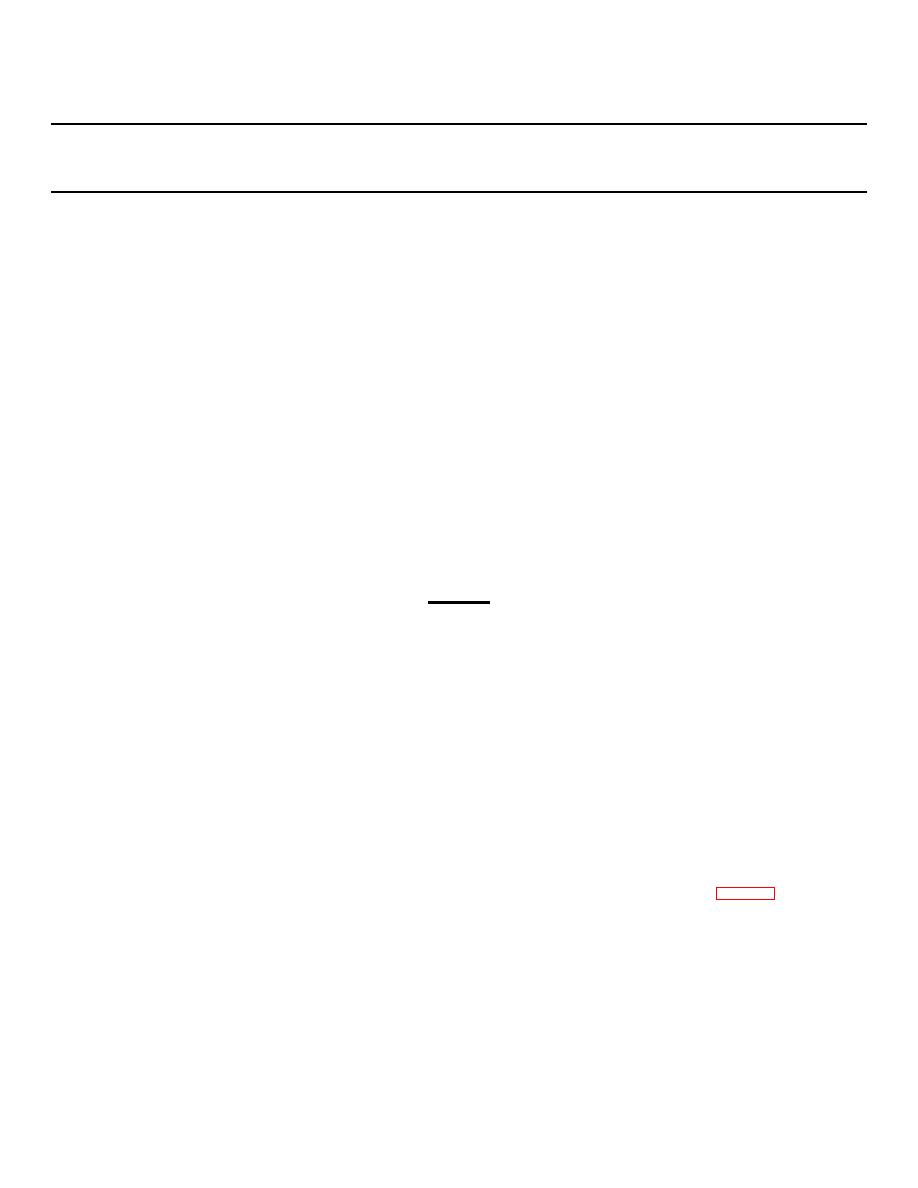 |
|||
|
|
|||
|
Page Title:
INSPECTION/REPLACEMENT/REPAIR - CONTINUED |
|
||
| ||||||||||
|
|
 TM 9-2320-269-34-1
PISTONS AND CONNECTING RODS - CONTINUED
ACTION
LOCATION
ITEM
REMARKS
INSPECTION/REPLACEMENT/REPAIR - CONTINUED
33.
Piston (1) and
a.
To figure piston-to-bore clearance,
cylinder block
subtract piston diameter measurement
bore (2)
from bore inside diameter measure-
ment.
Normal piston-to-bore clearance
for
new parts is 0.006 to 0.007 Inch
(0.15 to 0.18 mm).
b.
Using thickness gage free of nicks and
bends, and spring scale, check piston-
to-bore clearance in four places,
90 degrees apart, while holding piston
(1) upside down in bore.
Actual clearance is 0.001 inch
(0.0254 mm) greater than
thickness
of gage that can be withdrawn
from
between piston (1) and bore (2)
with
a 6 lb (2.7216 kg) pull.
CAUTION
Do not try to change the gap clearance of chrome faced rings by filing the ends of the rings. Chrome plating
will be damaged.
NOTE
Always use new piston rings whenever a piston has been removed for inspection or replacement.
34.
New piston
a.
Check ring gap In cylinder bore (2) by
rings (3)
Inserting rings (3) one at a time Into
cylinder bore (2), pushing ring down far
enough to be in normal area of ring
travel, and using top of piston (1) to
keep ring (3) parallel with top of
bore (2).
b.
Using thickness gage, measure ring gap
between ends of ring (3).
See Repair and Replacement
Standards (page 1-6) for ring gap
limits.
2-150
|
|
Privacy Statement - Press Release - Copyright Information. - Contact Us |